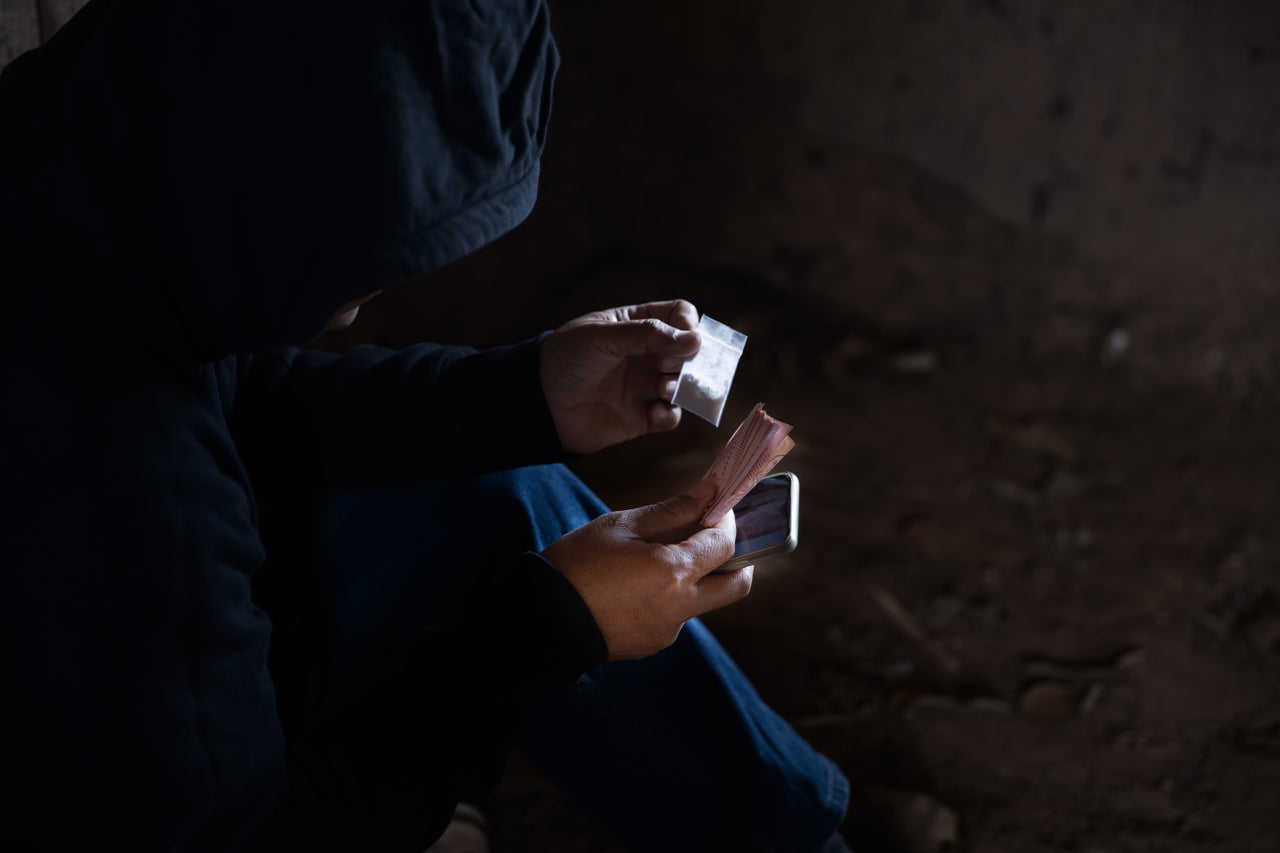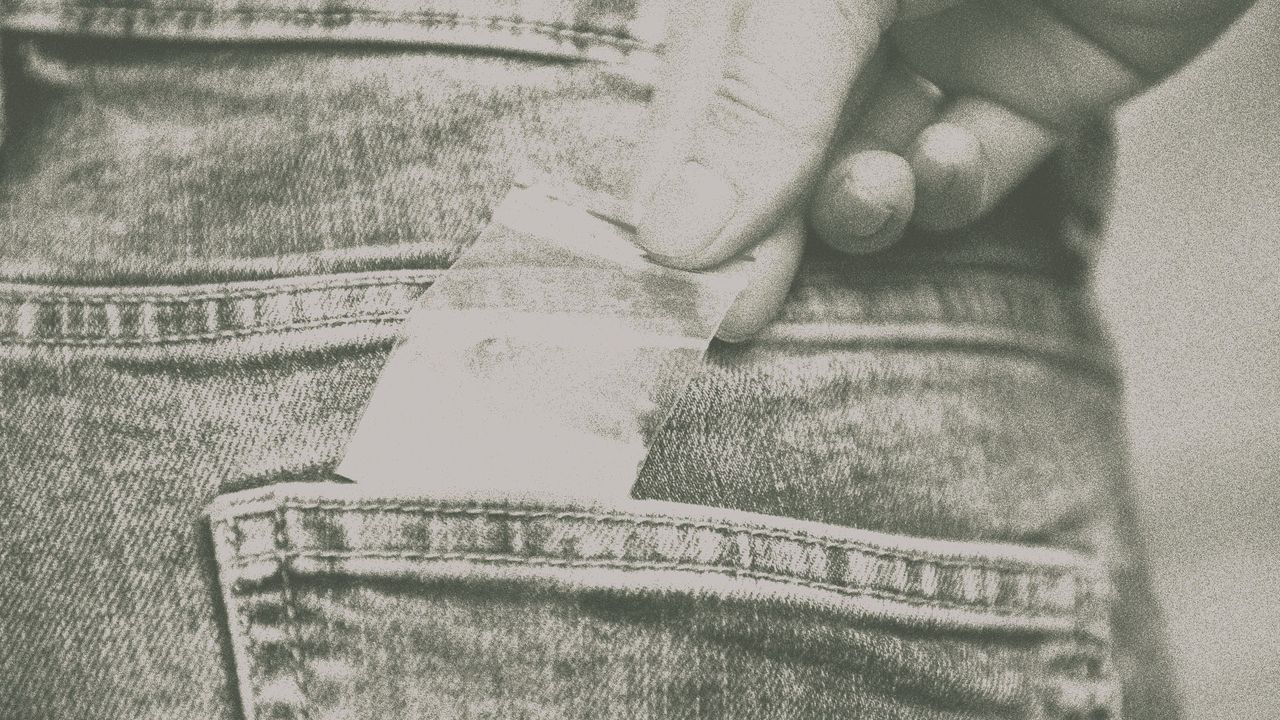
This is part of a series by HuffPost UK about county lines drug dealing in Britain.
For decades, children and young people have been used and exploited through a drug distribution model known as “county lines” – and it has evolved under lockdown.
County lines are drug networks engineered by gangs and organised criminal networks that export illegal substances – typically heroin and crack cocaine – between the growing market in suburban areas and larger cities.
The “lines” are both the dedicated mobile phone lines and the physical geographical and transport routes that connect dealers and users.
Gangs exploit children and vulnerable adults to transport and store the drugs and sometimes money, often using coercion and intimidation tactics – as well as violence and sexual abuse – to keep them in line.
How big a problem is it?
The phenomenon has existed since the 1990s, at least, and was once simply referred to as “going to country”.
A recent assessment suggests there are more than 1,000 lines in operation nationally while investigators say a typical “line” will generate in the region of £2,000 to £3,000 per day.
How do young people get caught up in it?
Young people exploited in this way are usually trafficked to areas a long way from home as part of a gang’s narcotics network.
Children as young as nine are being coaxed into this illicit web. The methods vary from chicken shop grooming to being approached outside school gates. It is not uncommon for some to be initially approached by peers, who have themselves been groomed and exploited, which can make it even harder for them or indeed anyone observing to identify the risks without knowing the signs.
The first concrete sign that something is wrong is when they go missing – for hours and days at first, then for weeks and months at a time, and sometimes forever.
But by then they may have been caught up for more than a year.
Sadia Ali and Aisha Ahmed at north London charity Minority Matters – with whom HuffPost UK has produced this series – say young people will have been told by their groomers to act out at school, which eventually results in their expulsion. This removes a safety net and distracts parents and teachers from what is really being done by groomers.
Baffled authorities and worried families have no idea where to find them, while police turn mothers away for help if their child is over 18, HuffPost UK has been told.
Then what?
Children and young people will spend increasing amounts of time away from home, travelling up and down the “line” on the train or – increasingly – using minicabs to avoid detection. One mother we spoke to found train tickets in her son’s pockets for places she had no idea he had been.
They may be enticed into the activity with the promise of a lucrative lifestyle, then set up by the line leaders in staged “robberies” of drugs, and told to work for free indefinitely to pay off this “debt”. This, along with the threat of violence to them or their family, make it hard or impossible to escape the cycle, even if they are physically brought home.
In some cases, the adult “line” leaders or child drug dealers will take up residence in a property at one end of the line, often belonging to a vulnerable person, and use it to operate their criminal activity – a move called “cuckooing”. Children ferry contraband to and from these properties.
In the final instalment of this series, to be published on Tuesday, we spoke exclusively to the mother of Abdi Ali, who was found dead at one of these houses after eight months missing.
HuffPost UK has teamed up with grassroots charity Minority Matters to lay bare the harsh realities of county lines, how it tears families apart, and how authorities have proved powerless or unwilling to pursue the real solutions that could end it.
Who does it affect?
Campaigners have warned that any child can be groomed for criminal exploitation. It affects boys and girls, children from families that experience a range of issues as well those from stable and economically better off families.
In London, Black boys are disproportionately impacted by this crisis and some campaigners argue that this is a direct result of the authorities’ failure to protect them combined with institutional racism.
Cheryl Phoenix, founder of the Black Child Agenda, speaks of what she calls the “schools-to-prison pipeline”.
“County lines are the after-effect of what’s going on with the education system and the discrimination against Black families in particular. Black children are 168 times more likely to be excluded from school – so with that exclusion that means you have children on the streets. If they’re on the streets that means they’re easily accessible by these gangs. The majority of these young people on the road have been permanently excluded from schools.”
The leaders of county lines deliberately deploy white youth to transport drugs to certain areas because of a decreased likelihood of them being stopped and searched by police, HuffPost UK has heard.
But for Black children, the flip side is that when they are caught police and authorities are “less likely to see them as victims” and “do not do enough to look for the groomers, the people at the top of the illegal enterprise”.
One mother whose son is being exploited through county lines told us vulnerable youth are being criminalised instead of supported.
“The police are not arresting the masterminds behind the county lines – just our kids who are stuck in this vicious cycle after being groomed by these gangs. They see no way out because their lives are threatened, and their families’, if they leave,” she said.
“So they get caught by the police, serve time, are released then forced to go back to the gang because they feel they have no choice. They are released to the streets, the same place and the environment overrun with the same people that exploit them.”
Another parent added: “The children going through this, seeing the desperation in their eyes means they’re either going to die somebody on the streets or kill somebody on the streets. What can a parent do?”
How has Covid changed things?
Even as the Covid-19 outbreak has brought the world to a standstill, campaigners warn the pandemic is pushing county lines violence from the UK’s large cities to smaller towns.
In November, charity representatives told a committee of MPs that the grooming tactics of gangs had evolved in response to enhanced policing in large cities over lockdown.

Speaking at a virtual All-Party Parliamentary Group (APPG) on Knife Crime meeting, former Islington Council education chief Joe Caluori – who now works at crime and justice consultancy Crest Advisory – said the “pattern of exploitation” was becoming more focused in “seaside and market towns”.
Barnardo’s chief executive Javed Khan told the APPG vulnerable children targeted by county lines were feeling a “poverty of hope” because they “don’t dare believe in a positive future” and that “Covid-19 has made it much much worse”.
He said: “There are even more vulnerable young people now who are easy prey for exploitative gangs. Child criminal exploitation hasn’t stopped during Covid-19 – it’s adapted.”
Lockdown has meant under-18s no longer have the relative cover of going to schools, says Aisha Ahmed, development manager for Minority Matters.
“Parents struggling with children missing or on remand have nowhere to go, as there are no face-to-face services provided by statutory and voluntary agencies,” she said.
“More children and young people are being caught hundreds of miles from home, distressed and with mental health problems. Although police are seeing evidence of abuse, via producing drugs plugged in their body whilst in custody, they’re keen to process them as criminals and prosecute them."
More than 30,000 young people had been referred to the See, Hear, Respond programme led by Barnardo’s and funded by the Department for Education to help children and parents who were experiencing increased adversity during coronavirus.
The APPG heard anonymous audio clips of young people recorded by the Barnardo’s Routes service which helps children at risk of serious violence, saying they wanted “a new life away from bad people” and they were “terrified” of gangs.
Safeguarding minister Victoria Atkins told the committee the Home Office had invested a “£25m package” in responding to county lines issues.
What drives it?
In short, money and narcotics.
Ahmed told us: “The root cause of knife crime and children being groomed and exploited is for profits from hard core drugs – heroin and cocaine. Children and young people neither bring in the drugs into the country, nor are the beneficiaries of what police call the ‘Night Economy’ – however, they are paying with their lives.
“As long as there is a growing demand for these drugs, there’ll be a supply. Thus, children will be used and abused unless they’re protected by the government, by having a national strategy to address the illegal demand and supply of drugs. No child is safe unless this is addressed at the national level.”
So what needs to be done?
The question of how the drugs are getting onto the streets remains. Neither the children who are being turned into mules nor the on-the-ground line leaders control the borders. Just weeks ago, a £21m haul of heroin that was hidden inside bags of rice was seized from a container ship at a UK port.
The National Crime Agency said the seizure is one of the largest ever of heroin in the UK. Even though the container ship was destined for the Netherlands, it is highly likely its cargo could have ultimately ended up on UK streets as well as mainland Europe.
Ahmed said: “The Conservative government has lost the war on drugs, and consequently, on crime. They have been in government long enough to do something about the issues.
“It is easy to target young people, often groomed and criminally exploited from a young age, and use them to bolster the statistics to show that people are getting apprehended.
“The simple truth is, the billions of pounds from drugs trade aren’t going to these young children. They are often, as recognised by the government itself, slaves in the trade. It is hard to believe that the government is unable to trace the money, or even the drugs coming into the UK.
“With all the security focused statutory bodies in this country, we know that the know-how and resources are there. It is high time they were put to good use. The government has the power to pull levers, and create a specialised, policy driven response to this issue. Setting up funding schemes and leaving it to charities isn’t the answer.”
